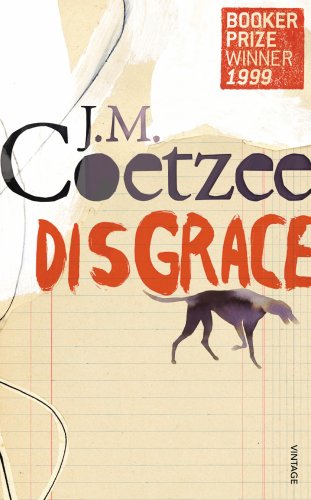 Disgrace by J. M. Coetzee (1999). Fifty-two years old and twice divorced, Professor David Lurie thought the affair with his student might bring passion back to his life. Instead, it costs him his job and his friends when he refuses to repent his sin. He retreats to his daughter’s farm, hoping to build on their relationship and write about Byron. But his tranquil oasis is shattered by racial violence in this uncompromising novel by the South African Nobel laureate.
Disgrace by J. M. Coetzee (1999). Fifty-two years old and twice divorced, Professor David Lurie thought the affair with his student might bring passion back to his life. Instead, it costs him his job and his friends when he refuses to repent his sin. He retreats to his daughter’s farm, hoping to build on their relationship and write about Byron. But his tranquil oasis is shattered by racial violence in this uncompromising novel by the South African Nobel laureate.
The List of Books
We awarded points for each selection – 10 points for a first place pick, nine points for a second place pick, and so on. Then we totaled up all the points and ranked them accordingly. Here are all the books ordered by the number of points each earned. In the parentheses are the initials of the authors that selected them and the points earned. Click on their initials to see their list.
 Embers by Sándor Márai (1942). Henrik, a nobleman of the Austro-Hungarian Empire, and Konrad, a humble man with ambition, became best friends in military school. They remained inseparable, even after Henrik married Konrad’s friend. Then, one night, their relationship ruptured. Forty-one years pass until they meet again before the embers of a fading fire, where they probe their relationship and their lives.
Embers by Sándor Márai (1942). Henrik, a nobleman of the Austro-Hungarian Empire, and Konrad, a humble man with ambition, became best friends in military school. They remained inseparable, even after Henrik married Konrad’s friend. Then, one night, their relationship ruptured. Forty-one years pass until they meet again before the embers of a fading fire, where they probe their relationship and their lives.
Total Points: 10 (RW 10)
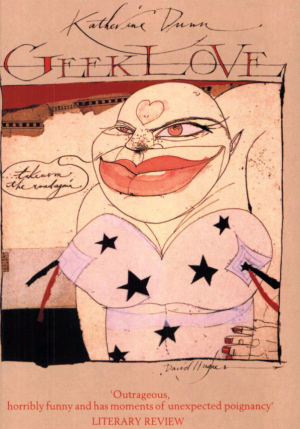 Geek Love by Katherine Dunn (1989). In this wild, oddball novel, Lily and Art Binewski purposely create a family of freaks and geeks by procreating under the influence of experimental drugs. This genetically altered “family” travels as a circus. Dunn’s carnival of misfits is a memorable, darkly funny, and emotionally trenchant portrait of love and family on the fringe.
Geek Love by Katherine Dunn (1989). In this wild, oddball novel, Lily and Art Binewski purposely create a family of freaks and geeks by procreating under the influence of experimental drugs. This genetically altered “family” travels as a circus. Dunn’s carnival of misfits is a memorable, darkly funny, and emotionally trenchant portrait of love and family on the fringe.
Total Points: 10 (JW 10)
 Gone with the Wind by Margaret Mitchell (1936). Many sagas novels have been written about the Civil War and its aftermath. None take us into the burning fields and cities of the American South as Gone With the Wind does. This Pulitzer Prize-winning novel of love and war creates haunting scenes and thrilling portraits of remarkably vivid characters. Through the white-shouldered, irresistible Scarlett and the flashy, contemptuous Rhett, Mitchell not only conveyed a timeless story of survival under the harshest of circumstances, she also created two of the most famous lovers in the English-speaking world since Romeo and Juliet.
Gone with the Wind by Margaret Mitchell (1936). Many sagas novels have been written about the Civil War and its aftermath. None take us into the burning fields and cities of the American South as Gone With the Wind does. This Pulitzer Prize-winning novel of love and war creates haunting scenes and thrilling portraits of remarkably vivid characters. Through the white-shouldered, irresistible Scarlett and the flashy, contemptuous Rhett, Mitchell not only conveyed a timeless story of survival under the harshest of circumstances, she also created two of the most famous lovers in the English-speaking world since Romeo and Juliet.
Total Points: 10 (JPico 10)
 I, Claudius by Robert Graves (1934). Here is everything you could want in a novel about ancient Rome: warfare and spectacle, scandal and intrigue (and still more intrigue). The Claudius of Graves’s imagination—a disarmingly charming pedant and reluctant tyrant—confides his beginnings as a crippled, unwanted child and the internecine dynastic struggles that left him the last man standing. It is soap opera on an epic scale, dramatizing the fall of Roman republican ideals.
I, Claudius by Robert Graves (1934). Here is everything you could want in a novel about ancient Rome: warfare and spectacle, scandal and intrigue (and still more intrigue). The Claudius of Graves’s imagination—a disarmingly charming pedant and reluctant tyrant—confides his beginnings as a crippled, unwanted child and the internecine dynastic struggles that left him the last man standing. It is soap opera on an epic scale, dramatizing the fall of Roman republican ideals.
Total Points: 10 (AGold 10)
 Ill Seen, Ill Said by Samuel Beckett (1981). In terse, haunting prose, Beckett’s novella meditates on the absurdities of life and death, our grim longing for happiness, and “that old tandem” of reality and its unnamable “contrary.” The narrative itself, boiled down to poetic reflections, focuses on an old woman enduring her last days in a remote cabin. In the end, though all is blackness and void, Beckett wishes on us “grace to breathe that void,” even momentarily.
Ill Seen, Ill Said by Samuel Beckett (1981). In terse, haunting prose, Beckett’s novella meditates on the absurdities of life and death, our grim longing for happiness, and “that old tandem” of reality and its unnamable “contrary.” The narrative itself, boiled down to poetic reflections, focuses on an old woman enduring her last days in a remote cabin. In the end, though all is blackness and void, Beckett wishes on us “grace to breathe that void,” even momentarily.
Total Points: 10 (JB 10)
 JR by William Gaddis (1975). This formally unique, dense, National Book Award–winning novel is composed almost entirely of dialogue and reads like a stream of conversation. This satire of high finance features an eleven-year-old named JR who uses a pay phone and mail order scheme to build a vast business empire on paper with the help of a partner, a struggling composer named Bast who serves as the company’s public face.
JR by William Gaddis (1975). This formally unique, dense, National Book Award–winning novel is composed almost entirely of dialogue and reads like a stream of conversation. This satire of high finance features an eleven-year-old named JR who uses a pay phone and mail order scheme to build a vast business empire on paper with the help of a partner, a struggling composer named Bast who serves as the company’s public face.
Total Points: 10 (LMill 10)
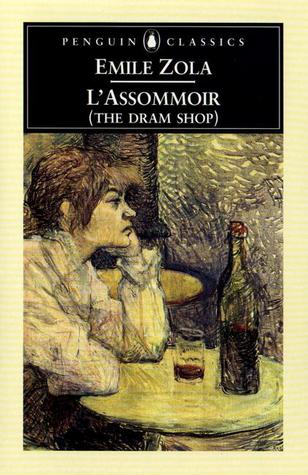 L’Assommoir (The Dram Shop) by Émile Zola (1877). Like Uncle Tom’s Cabin, this story—of the downfall of a Parisian laundress—turned a burning social issue into a sensational best-seller. The desperate alcoholism of Gervaise Lantier and her husband held a mirror to the shocking moral condition of the urban poor. But it is saved from mere didacticism by Zola’s eye and ear. The unbuttoned urban dialogue prefigures Celine and Henry Miller; the cinematic structuring of the novel’s great scenes suggests that Zola would have made a great film director.
L’Assommoir (The Dram Shop) by Émile Zola (1877). Like Uncle Tom’s Cabin, this story—of the downfall of a Parisian laundress—turned a burning social issue into a sensational best-seller. The desperate alcoholism of Gervaise Lantier and her husband held a mirror to the shocking moral condition of the urban poor. But it is saved from mere didacticism by Zola’s eye and ear. The unbuttoned urban dialogue prefigures Celine and Henry Miller; the cinematic structuring of the novel’s great scenes suggests that Zola would have made a great film director.
Total Points: 10 (TW 10)
 Nana by Émile Zola (1880). Nana is a low-born courtesan who succeeds among the French elite. Zola meant his heroine to represent the corruption of the Second Empire under the twin stresses of hedonism and capitalism. But like some uncontrollable genie uncorked from a bottle, she becomes the greatest femme fatale since Helen of Troy. The most explicit of the classic nineteenth-century novels, Nana exists in the vital midpoint between Anna Karenina and Valley of the Dolls.
Nana by Émile Zola (1880). Nana is a low-born courtesan who succeeds among the French elite. Zola meant his heroine to represent the corruption of the Second Empire under the twin stresses of hedonism and capitalism. But like some uncontrollable genie uncorked from a bottle, she becomes the greatest femme fatale since Helen of Troy. The most explicit of the classic nineteenth-century novels, Nana exists in the vital midpoint between Anna Karenina and Valley of the Dolls.
Total Points: 10 (TW 10)
 Olive Kitteridge by Elizabeth Strout (2008). Carolyn Leavitt writes: “Prickly Maine denizen Olive Kittridge presides over these stories, and she’s as awful as she is appealing. The novel unspools thirty years of relationships, illuminating small town life in Maine and the pain, panic and yearning of its people. What I love most about this book is that while women writers are sometimes falsely demeaned for not taking on the ‘big subjects’, Strout has shown there is nothing bigger or more important than the daily wonder of our lives.
Olive Kitteridge by Elizabeth Strout (2008). Carolyn Leavitt writes: “Prickly Maine denizen Olive Kittridge presides over these stories, and she’s as awful as she is appealing. The novel unspools thirty years of relationships, illuminating small town life in Maine and the pain, panic and yearning of its people. What I love most about this book is that while women writers are sometimes falsely demeaned for not taking on the ‘big subjects’, Strout has shown there is nothing bigger or more important than the daily wonder of our lives.
Total Points: 10 (CL 10)
 Sentimental Education: The Story of a Young Man by Gustave Flaubert (1869). Based on Flaubert's own youthful passion for an older woman, this novel was described by the author as "the moral history of the men of my generation." It follows the amorous adventures of Frederic Moreau, a law student who, returning home to Normandy from Paris, notices Mme Arnoux, a slender, dark woman several years older than himself. It is the beginning of an infatuation that will last a lifetime. He befriends her husband, an influential businessman, and as their paths cross and re-cross over the years, Mme Arnoux remains the constant, unattainable love of Moreau's life in this love story which blends historical authenticity with sharp satire.
Sentimental Education: The Story of a Young Man by Gustave Flaubert (1869). Based on Flaubert's own youthful passion for an older woman, this novel was described by the author as "the moral history of the men of my generation." It follows the amorous adventures of Frederic Moreau, a law student who, returning home to Normandy from Paris, notices Mme Arnoux, a slender, dark woman several years older than himself. It is the beginning of an infatuation that will last a lifetime. He befriends her husband, an influential businessman, and as their paths cross and re-cross over the years, Mme Arnoux remains the constant, unattainable love of Moreau's life in this love story which blends historical authenticity with sharp satire.
Total Points: 10 (BEE 10)
 Seven Pillars of Wisdom by T. E. Lawrence (1925). Lawrence feared that his account of the Arab revolt he helped lead against the Ottoman Empire during World War I was “too human a document.” His form of warfare, composed of Bedouin raids, heartened a generation sickened by the mechanized slaughter of Flanders Fields. This sexually ambiguous, daring archaeologist fascinates us for the same reason we still read The Iliad: our need for stirring examples of grace under pressure.
Seven Pillars of Wisdom by T. E. Lawrence (1925). Lawrence feared that his account of the Arab revolt he helped lead against the Ottoman Empire during World War I was “too human a document.” His form of warfare, composed of Bedouin raids, heartened a generation sickened by the mechanized slaughter of Flanders Fields. This sexually ambiguous, daring archaeologist fascinates us for the same reason we still read The Iliad: our need for stirring examples of grace under pressure.
Total Points: 10 (AF 10)
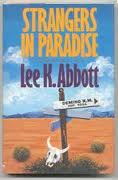 Strangers in Paradise: Stories by Lee K. Abbott (1986). A guilt-ridden father drumming World War II history into his son, a vet turned desperado, a golfer gone temporarily mad—all of Abbott's bold and reckless characters negotiate the bounds of acceptable human behavior with frequent missteps in this collection of 14 stories, filled with humor, pathos and desperation, many of which are set in the Southwest.
Strangers in Paradise: Stories by Lee K. Abbott (1986). A guilt-ridden father drumming World War II history into his son, a vet turned desperado, a golfer gone temporarily mad—all of Abbott's bold and reckless characters negotiate the bounds of acceptable human behavior with frequent missteps in this collection of 14 stories, filled with humor, pathos and desperation, many of which are set in the Southwest.
Total Points: 10 (TJ 10)
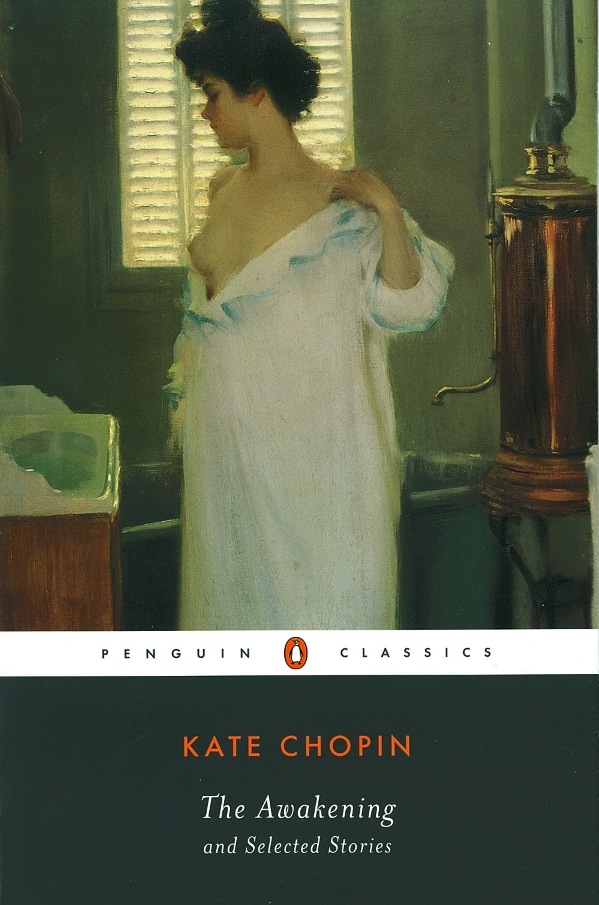 The Awakening by Kate Chopin (1899). A terribly shocking book in its day, The Awakening tells the story of an artistic, twenty-eight-year-old New Orleans woman who finds life with her husband and two children unfulfilling. On summer holiday, she has an affair with a younger man. Revived, she leaves her family. But her happiness is short lived as she is punished by a society that has little tolerance for such independent women.
The Awakening by Kate Chopin (1899). A terribly shocking book in its day, The Awakening tells the story of an artistic, twenty-eight-year-old New Orleans woman who finds life with her husband and two children unfulfilling. On summer holiday, she has an affair with a younger man. Revived, she leaves her family. But her happiness is short lived as she is punished by a society that has little tolerance for such independent women.
Total Points: 10 (SMK 10)
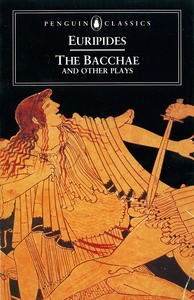 The Bacchae by Euripides (408–406 b.c.e.). “Gods should be exempt from human passions,” says Cadmus, but such is not the case for Dionysus in one of the goriest Greek tragedies. Dionysus seeks revenge on Cadmus’s grandson Pentheus, a Theban king who has tried to quash the Bacchus cult in Thebes. Dionysus seduces Pentheus into witnessing a Bacchanalian orgy, where he is torn to pieces by the revelers, including his own mother.
The Bacchae by Euripides (408–406 b.c.e.). “Gods should be exempt from human passions,” says Cadmus, but such is not the case for Dionysus in one of the goriest Greek tragedies. Dionysus seeks revenge on Cadmus’s grandson Pentheus, a Theban king who has tried to quash the Bacchus cult in Thebes. Dionysus seduces Pentheus into witnessing a Bacchanalian orgy, where he is torn to pieces by the revelers, including his own mother.
 The Baron in the Trees by Italo Calvino (1957).
The Baron in the Trees by Italo Calvino (1957).
Appreciation of Italo Calvino’s The Baron in the Trees by Daniel Wallace
The Baron in the Trees, by Italo Calvino, is the novel I think of as a singular and instrumental influence on me and my life as a writer. That being said, I read it decades ago I remember very little of it now: characters, plot points, major themes or motifs. Not really sure about those things. I do remember a dog, a woman, Voltaire . . . In a nutshell: in 1767 a strong-willed 12-year-old son of an Italian baron refuses to eat snails one night, is sent from the table, climbs an oak and swears never to come down – and doesn’t, not for the entirety of the novel. The rest of his life is lived in the trees. Which is impossible, but I believed every word of it. In fact, other than this one detail (that our main character traverses Europe, has friends and lovers and a dog without ever touching toe to ground) the story is told in the most realistic and historical detail. That is the great lesson I took from this book and from Calvino’s other books as well: that as long as the reader feels secure in the hands of an honest, forthright storyteller the writer can get on with the business of adornment and exaggeration, the making up of things that never happened, never could have happened, and never will, and the reader will believe that too. It’s called magical realism, but it might just as well be called realistic magic.
Total Points: 10 (DWall 10)
 The Birthday Party (1958) and The Homecoming (1965) by Harold Pinter. The Nobel Prize–winning master of menacing understatement subtly links exfoliating, abstract power struggles with banal domestic situations in two of his finest plays. The interrogation and abduction of a helpless (and perhaps guiltless) tenant makes The Birthday Party simultaneously celebrated as an ironic mockery of the phenomena of survival and continuity. In The Homecoming, a philosophy professor’s return to the domicile he and his wife share with his male relatives becomes a struggle for sexual dominance from which the lone woman emerges triumphant. The result is opaque, disturbing, enthralling drama.
The Birthday Party (1958) and The Homecoming (1965) by Harold Pinter. The Nobel Prize–winning master of menacing understatement subtly links exfoliating, abstract power struggles with banal domestic situations in two of his finest plays. The interrogation and abduction of a helpless (and perhaps guiltless) tenant makes The Birthday Party simultaneously celebrated as an ironic mockery of the phenomena of survival and continuity. In The Homecoming, a philosophy professor’s return to the domicile he and his wife share with his male relatives becomes a struggle for sexual dominance from which the lone woman emerges triumphant. The result is opaque, disturbing, enthralling drama.
Total Points: 10 (AMH 10)
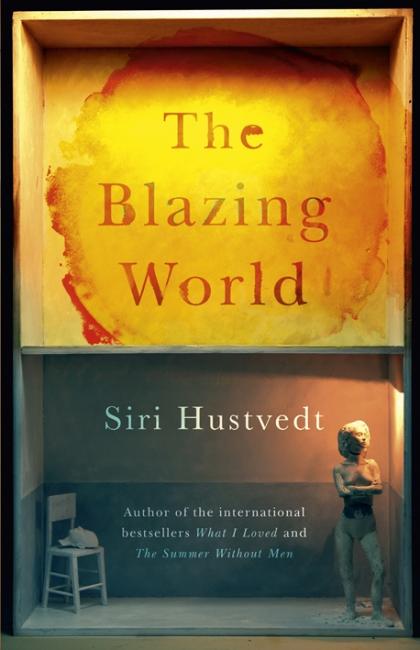 The Blazing World by Siri Hustvedt (2014). This provocative novel about perception, prejudice, desire, and one woman’s struggle to be seen tells the story of artist Harriet Burden, who, after years of having her work ignored, ignites an explosive scandal in New York’s art world when she recruits three young men to present her creations as their own. Yet when the shows succeed and Burden steps forward for her triumphant reveal, she is betrayed by the third man, Rune. Many critics side with him, and Burden and Rune find themselves in a charged and dangerous game, one that ends in his bizarre death. An intricately conceived, diabolical puzzle presented as a collection of texts, including Harriet’s journals, assembled after her death, it tells the tale from multiple perspectives as Harriet’s critics, fans, family, and others offer their own conflicting opinions of where the truth lies.
The Blazing World by Siri Hustvedt (2014). This provocative novel about perception, prejudice, desire, and one woman’s struggle to be seen tells the story of artist Harriet Burden, who, after years of having her work ignored, ignites an explosive scandal in New York’s art world when she recruits three young men to present her creations as their own. Yet when the shows succeed and Burden steps forward for her triumphant reveal, she is betrayed by the third man, Rune. Many critics side with him, and Burden and Rune find themselves in a charged and dangerous game, one that ends in his bizarre death. An intricately conceived, diabolical puzzle presented as a collection of texts, including Harriet’s journals, assembled after her death, it tells the tale from multiple perspectives as Harriet’s critics, fans, family, and others offer their own conflicting opinions of where the truth lies.
Total Points: 10 (AFilip 10)
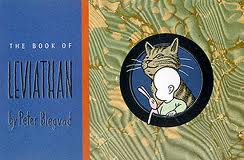 The Book of Leviathan by Peter Blegvad (2001). Snappy puns, clever palindromes, stream of consciousness insights, and brilliant non sequiturs fill the dialogue bubbles of this surreal collection of comic strips that chronicle the epistemological adventures of a faceless baby named Leviathan, his wise pet Cat, and his favorite toy Bunny. Sigmund Freud, Emily Dickinson, and St. Augustine are among the luminaries whose words inform these tales that explore the world’s mysteries and absurdities through a child’s eyes.
The Book of Leviathan by Peter Blegvad (2001). Snappy puns, clever palindromes, stream of consciousness insights, and brilliant non sequiturs fill the dialogue bubbles of this surreal collection of comic strips that chronicle the epistemological adventures of a faceless baby named Leviathan, his wise pet Cat, and his favorite toy Bunny. Sigmund Freud, Emily Dickinson, and St. Augustine are among the luminaries whose words inform these tales that explore the world’s mysteries and absurdities through a child’s eyes.
Total Points: 10 (MSB 10)
 The Children’s Bach by Helen Garner (1984). This novella tells the story of Athena and Dexter, a long married couple with a severely handicapped child whose predictable lives are stirred if not quite shaken when Dexter runs into an old friend, Elizabeth, who introduces three charming, if chaotic hangers-on into their lives. Garner’s astonishing minimalist prose moves seamlessly among points-of-view, weaving effortlessly between reality and desire to portray ordinary people who can’t quite find the words to articulate longings they aren’t quite sure of.
The Children’s Bach by Helen Garner (1984). This novella tells the story of Athena and Dexter, a long married couple with a severely handicapped child whose predictable lives are stirred if not quite shaken when Dexter runs into an old friend, Elizabeth, who introduces three charming, if chaotic hangers-on into their lives. Garner’s astonishing minimalist prose moves seamlessly among points-of-view, weaving effortlessly between reality and desire to portray ordinary people who can’t quite find the words to articulate longings they aren’t quite sure of.
Total Points 10: (SMill 10)
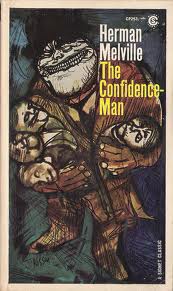 The Confidence-Man: His Masquerade by Herman Melville (1857). Truth, trust, and hope serve as plot and protagonist in this often comic, philosophical novel that anticipated postmodernism by a century. As the good ship Fidèle heads down the Mississippi, a long string of passengers—some modeled on Emerson, Thoreau, and Captain Ahab himself—encounter a shape-shifting confidence man who tells them exactly what they want to hear in order to get what he wants, in a work that raised doubt to an art form.
The Confidence-Man: His Masquerade by Herman Melville (1857). Truth, trust, and hope serve as plot and protagonist in this often comic, philosophical novel that anticipated postmodernism by a century. As the good ship Fidèle heads down the Mississippi, a long string of passengers—some modeled on Emerson, Thoreau, and Captain Ahab himself—encounter a shape-shifting confidence man who tells them exactly what they want to hear in order to get what he wants, in a work that raised doubt to an art form.
Total Points: 10 (ALK 10)
The Golden Argosy edited by Van H. Cartmell and Charles Grayson (1947).
Appreciation of The Golden Argosy by Stephen King
I first found The Golden Argosy in a Lisbon Falls (Maine) bargain barn called The Jolly White Elephant, where it was on offer for $2.25. At that time I only had four dollars, and spending over half of it on one book, even a hardcover, was a tough decision. I’ve never regretted it.
Originally published in 1947 and reissued in 1955—but not updated or reprinted since—The Golden Argosy is an anthology of roughly fifty-five short stories. The editors made no pretensions to “quality fiction,” but simply tried to publish the best-loved stories published in the nineteenth and twentieth centuries, up to the post–World War II period.
Though it is in terrible need of updating (there is no Raymond Carver, for instance, no Joyce Carol Oates, because such writers came along too late for inclusion), it remains an amazing resource for readers and writers, a treasury in the true sense of the word, covering everything from sentimental masterpieces such as Bret Harte’s “The Outcasts of Poker Flat” to realistic character studies such as “Paul’s Case” by Willa Cather.
Every reader will find glaring omissions (Dorothy Parker’s “Big Blonde,” for instance), but you’ve got your Faulkner classic (“A Rose for Emily”), your Hemingway (“The Killers”), and your Poe (“The Gold-Bug”). It includes “The Rich Boy,” in which F. Scott Fitzgerald famously observes “the rich are different from you and me,” and overlooked gems from writers such as Sherwood Anderson (“I’m a Fool”) and John Collier (“Back for Christmas”).
The Golden Argosy taught me more about good writing than all the classes I’ve ever taken. It’s the best $2.25 I ever spent.
Total Points: 10 (SK 10)
 The Outward Room by Millen Brand (1937). Also a poet, Brand wrote sensitively about mental illness when the topic was still taboo. This novel tells the story of a woman who escapes from a mental institution and tries to adjust to “normal” life on the “outside.”
The Outward Room by Millen Brand (1937). Also a poet, Brand wrote sensitively about mental illness when the topic was still taboo. This novel tells the story of a woman who escapes from a mental institution and tries to adjust to “normal” life on the “outside.”
Total Points: 10 (PCam 10)
The Professor’s House by Willa Cather (1925). The professor’s house was “almost as ugly as it is possible for a house to be.” Now it has been dismantled. Yet the house, a symbol of the past, keeps beckoning Godfrey St. Peter, a professor in his mid-fifties whose outward success at work and home mask a passionless heart. “Theoretically he knew that life is possible, may be even pleasant, without joy. . . . But it had never occurred to him that he might have to live like that.”
 The Screwtape Letters by C. S. Lewis (1942). An amusing reversal of The Divine Comedy, this novel consists of letters from a senior devil (Screwtape) to his young nephew Wormword, teaching him how to tempt his first human “patient” to perdition. Lewis nicely balances theology and psychology, depicting hell as a bureaucracy with murderous office politics, and the loss of one’s soul as an imperceptible poisoning through chains of seemingly inconsequential sins.
The Screwtape Letters by C. S. Lewis (1942). An amusing reversal of The Divine Comedy, this novel consists of letters from a senior devil (Screwtape) to his young nephew Wormword, teaching him how to tempt his first human “patient” to perdition. Lewis nicely balances theology and psychology, depicting hell as a bureaucracy with murderous office politics, and the loss of one’s soul as an imperceptible poisoning through chains of seemingly inconsequential sins.
Total Points: 10 (DFW 10)